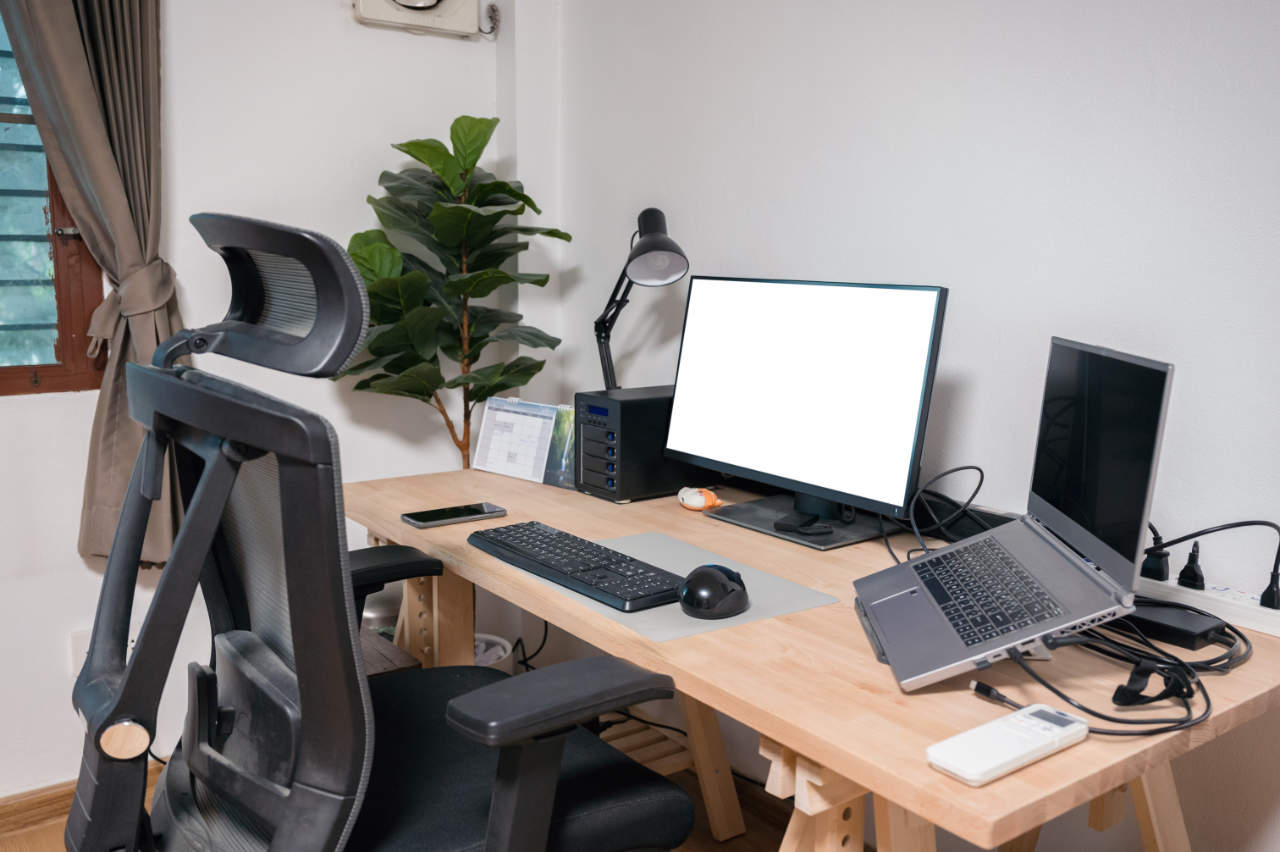Almost half a million workers in the UK have suffered musculoskeletal problems due to activities such as prolonged sitting and repetitive moments in 2021/22, with back pain accounting for 42% of reported musculoskeletal disorders.
With studies showing a direct correlation between musculoskeletal disorders (MSDs), poor ergonomics, inefficient office working environments and DSE set-ups, it’s no surprise that in 2022 musculoskeletal issues were one of the main reasons for lost work days. This is why employers must have clear policies to protect and support DSE users.
Find out more about Display Screen Equipment Training from Praxis42.
What is DSE?
DSE stand for Display Screen Equipment – electronic equipment that has an alphanumeric or graphic display screen, according to the Health and Safety Executive. This means any electronic device with a screen displaying letters and numbers, such as in text or calculations.
Common examples of DSE include:
- Smartphones.
- Tablets.
- Laptops.
- Desktop monitors.
- TV screens.
- Touch screens.
By law, employers have a duty of care towards their employees regarding DSE usage. The Health and Safety (Display Screen Equipment) Regulations 1992 were passed to protect DSE users from the adverse effects of prolonged DSE exposure and use, such as fatigue, eye strain, upper limb problems and backache from overuse or improper use of DSE.
These regulations include how to conduct risk assessments, who constitutes a DSE user, what training and information should be provided to employees, and how to consult with employees on DSE.
Find out more about Display Screen Equipment Regulations 1992 in our helpful guide.

Exemptions to DSE regulations
There are some exemptions to DSE regulations, including:
- Public-use display equipment, such as information displays.
- Display screen equipment found on public transport, such as trains and buses.
- Calculators and cash registers, or any other data equipment with small screens.
- Traditional design typewriters.
- Portable display systems that aren’t used for prolonged periods.
This is because many of these examples are unnecessary for individuals to complete their work tasks to an acceptable standard or aren’t used regularly for prolonged periods.
Who is a DSE user?
A DSE user is any individual who needs to use display screen equipment for a prolonged period to complete the tasks their job role requires. The Health and Safety Executive class a DSE user as someone who uses display screen equipment for at least one hour or more at a time.
DSE users can work both in and outside the office, full or part-time – as long as display screen equipment is needed to complete their tasks.
There are several job roles where DSE use is a common element of the workday. These roles can include:
- IT support.
- Managers and employees.
- Sales and marketing.
- Graphic designers.
- Web developers.
- Technicians.
- Digital artists.
- Security.
- Digital marketing and PR.
- Accountants.
Any worker in a role where DSE is a regular necessity for completing tasks that take longer than one hour should be considered a DSE user.
Read our guide on how to work safely with display screen equipment.

Employer’s responsibilities around DSE
Employers are legally obligated to safeguard all employees’ physical and mental health and wellbeing. The Health and Safety (Display Screen Equipment) Regulations 1992 outline that the law applies to all DSE users within a company or organisation, including those who:
- Work at a fixed workstation.
- Are mobile workers.
- Work from home (full-time and hybrid).
- Hot desk.
- Agile worker.
Under The Health and Safety (Display Screen Equipment) Regulations 1992, employers must have several health and safety measures in place to protect employees who use display screen equipment for a significant part of the working day.
These responsibilities include:
- Providing and paying for employee eye tests.
- Completing DSE workstation assessments.
- Reducing the health risks of prolonged DSE use by providing opportunities for regular breaks or changes in activity.
- Managing workloads and the work environment.
- Providing employees with up-to-date DSE training and information.
- Supporting the use of assistive technologies or tools where feasible or required.
DSE user training can be provided to employees in person or online. Praxis42’s Display Screen Equipment (DSE) Training is an in-depth e-learning course that helps promote a company-wide attitude towards safe DSE usage. It can be completed at an employee’s own pace and done by anyone who works with DSE as part of their role.

DSE risk assessments
To protect employee health and wellbeing, it is key for employers to conduct DSE risk assessments on an employee’s workspace and work activities, even when working at home, hybrid or agile working to ensure it is safe and potential risk to their health are managed effectively.
With the correct equipment and DSE set-up, employees should be less likely to feel the adverse effects of any prolonged DSE use, be more productive, and reduce the number of lost work days.
When conducting a DSE risk assessment, an employer needs to look at the following:
- The type of DSE use and arrangements such as office, home, hybrid or agile working.
- Provision of ergonomic equipment.
- Seating and how it may affect posture.
- The deskspace layout.
- Workplace environment.
- Information and training.
- The keyboard set-up.
- The mouse set-up.
- Lighting in the workspace.
- The employee’s work routine and the opportunities for breaks or changes in activity.
- Sound in the workspace.
- Workspace ventilation and temperature regulation.
- The screen – glares, brightness, distance from the employee.
- Any specific requirements the employee has.
These assessments should be conducted more than once, ideally when a new workstation is set up, when a new DSE user begins work, when any updates are made to existing workstations, and when DSE users start to report DSE-related pain and discomfort.
Employers can conduct these assessments and use the findings of self-assessments and inform users of their findings. Online assessments are a preferred method to capture and manage compliance information and resolve issues identified in the assessment. The Praxis42 Workstation Assessment Tool is used by thousands of users and employers to identify and manage DSE compliance and well-being at work.
Learn more about how Display Screen Equipment Training from Praxis42 can benefit your business and employees.
